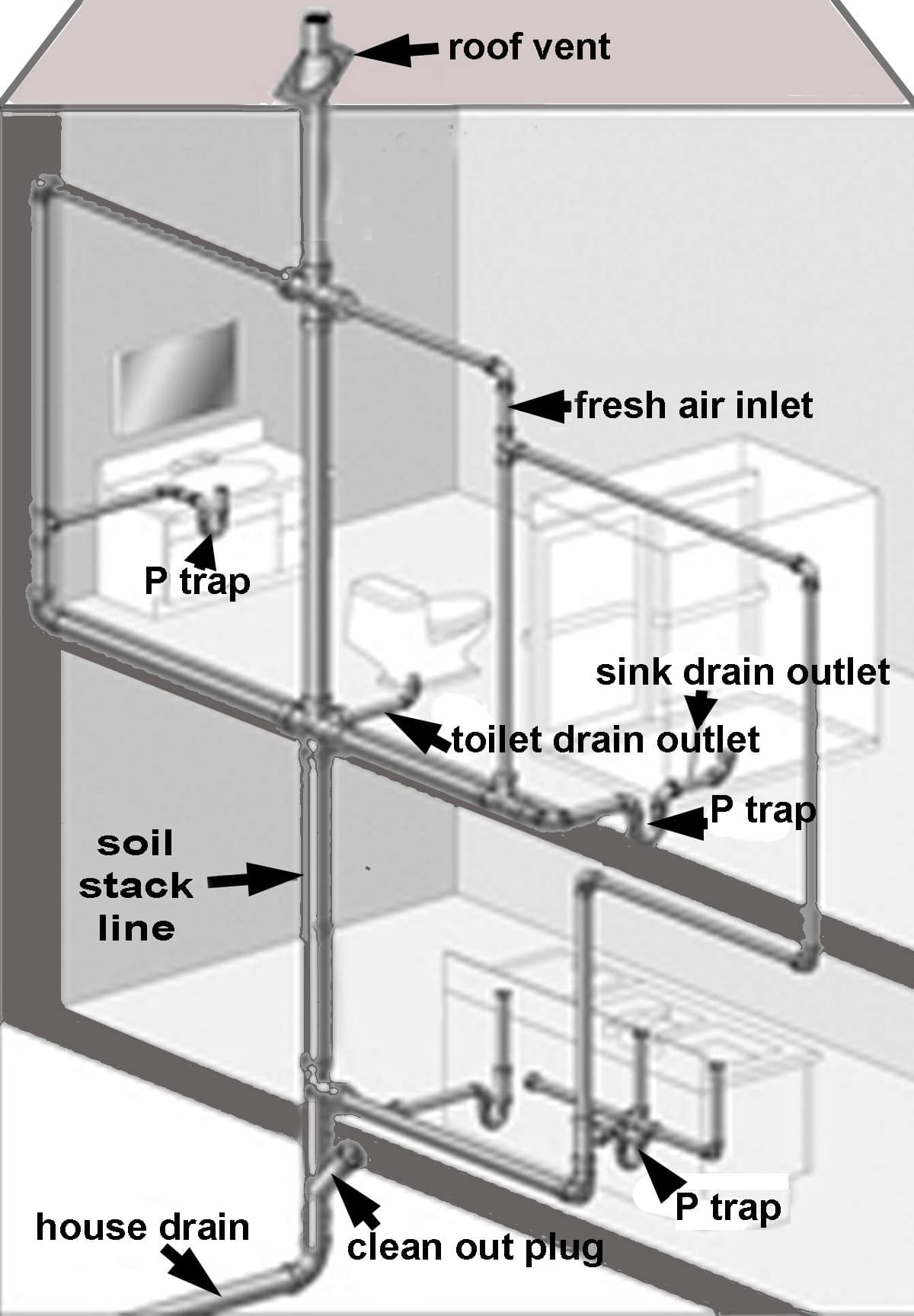If you own a home in the Village of New Hyde Park, or Nassau County, why not learn a little bit about your DWV pipes (Drain-Waste-Vent System). It could always come in handy. This is another in a series of helpful articles from the Balkan Drain Team, your local drain and sewer experts.
Your plumbing installation is comprised of a network of interconnected pipes that serve two major purposes. One is for the supply line connected to a public reservoir, water tank, or water tower to bring water into your home. Another system of pipes is dedicated for removal of waste water. It is eventually connected to a wastewater treatment facility or your septic tank. Your network of pipes that carries wastewater is usually identified as DWV pipes, or Drain-Waste-Vent lines.

The three categories of DWV pipes
- Drain pipes collect water from showers, bathtubs, home appliances, sinks, and other plumbing fixtures
- Waste pipes collect both wastewater and sewage from toilets
- Vent pipes act as exhaust and an inlet system to allow both gases to escape, and air to enter both drain and waste pipes. A vent prevents vacuum, so water and sewage can flow freely
All three different types are connected to your main drain line. Your main house drain carries sewage and wastewater to your septic tank, or a public treatment facility. Surprisingly, many homes in Nassau County still have private septic systems. Between your vent line and every drain pipe connected to a water fixture, there should be a p-trap in between. This trap has a downward curve shape to store stagnant clean water. This prevents toxic gases from entering your house through the fixture. Each trap ensures what is called a water barrier. A toilet already has a built-in p-trap, so there is no need to add another one. Vent lines are installed behind the wall, so you can’t see them, but they are (or should be) there. A vent line typically goes through your roof, and the tip of it can be seen sticking out.

What is a soil stack line?
A soil stack is the bottom portion of your vent line (main stack), and rune vertically. Your stack has various branch drain lines connected to it. This is the part of your drain system through which wastewater and sewage from upstairs flow into main drain line. The upper portion of your soil stack line acts as a vent, mostly for air passage. Your main drain line has a clean-out plug. It is a Y-shaped fitting closed with a cap. You can open the cap in case you need to clean obstruction in the system. Likewise, every time there is a turn in your drain system there should be a clean out.
The complexity of your DWV pipes and plumbing system
The more water fixtures in your house, or the more floors, DWV pipes get more complex as well. You will use more fittings, p-traps, and more connections to the vent line from multiple water fixtures. Installation of every new fixture must consider connecting to the vent line, soil stack, and main drain line as well. Since the vent line is often hidden inside a wall, you will need to create a “re-vent” connection. All your drain fixtures must connect to the main stack, and at a point higher than the highest plumbing fixture itself. In a complex plumbing installation where certain fixtures are just too far away from the main stack, it is good idea to have another individual vent line (secondary stack). That individual drain pipe would then act as a branch of the system.
Every area has its own local building and plumbing codes to govern the way your DWV pipes are installed. Unless you know what you are doing, any plumbing repair and installation of a new additional fixture (not as replacement) are best left to professionals. Learning about how your plumbing system works can be interesting. However, a clumsy DIY approach comes with the risk of damaging the entire DWV system. If you a question, why not get expert advice and service by contacting the Balkan Drain Team.




